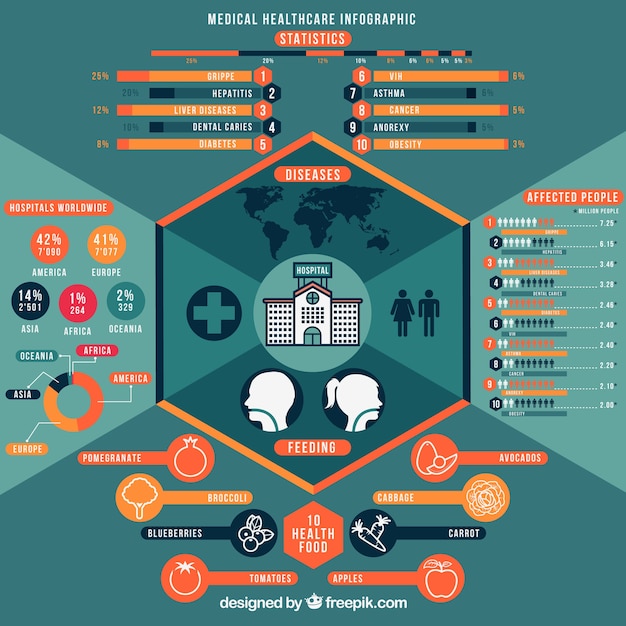Understanding & Using Your Vision and Dental Insurance Benefits

The Complete Guide to Understanding and Using Your Vision and Dental Insurance Benefits provides a comprehensive overview of how to maximize your coverage, reduce out-of-pocket expenses, and maintain optimal vision and dental health.
Navigating the world of insurance can be overwhelming, especially when it comes to vision and dental coverage. This guide aims to demystify the process, helping you understand and use your vision and dental insurance benefits effectively.
Understanding the Basics of Vision Insurance
Vision insurance is designed to help lower your costs for routine eye exams, eyeglasses, and contact lenses. Unlike health insurance, vision insurance often focuses on preventive care and maintaining good eyesight.
Understanding the different types of vision insurance plans available is crucial for making informed decisions.
Types of Vision Insurance Plans
There are several types of vision insurance plans, each with its own set of features and benefits. Here are some common types:
- Vision Benefits Packages: These plans typically offer a fixed dollar amount toward eye exams and eyewear.
- Preferred Provider Organization (PPO): PPO plans allow you to see any eye care provider, but you’ll generally pay less if you choose a provider within the plan’s network.
- Health Maintenance Organization (HMO): HMO plans require you to select a primary eye care provider within the network, and you may need a referral to see a specialist.
Selecting the right vision insurance plan depends on your individual needs and preferences.

Decoding Your Vision Insurance Policy
Before you can effectively use your vision insurance, it’s essential to understand the various components of your policy. This involves familiarizing yourself with terms like premiums, deductibles, and copays.
Understanding your vision insurance policy requires deciphering key elements such as premiums and deductibles.
Key Terms to Understand
Here’s a breakdown of some essential terms you’ll encounter:
- Premium: The monthly or annual fee you pay to maintain your insurance coverage.
- Deductible: The amount you must pay out-of-pocket before your insurance starts covering your expenses.
- Copay: A fixed amount you pay for specific services, such as an eye exam or a pair of glasses.
- Allowable Amount The maximum amount an insurer will pay for any given service.
Knowing these terms will help you better understand your coverage and potential out-of-pocket costs.
Maximizing Your Vision Insurance Benefits
Once you’re familiar with the basics of your vision insurance policy, you can start exploring ways to maximize your benefits. Scheduling regular eye exams is one of the most important steps.
Maximizing your vision insurance involves scheduling regular eye exams and utilizing available allowances for eyewear.
Tips for Getting the Most Out of Your Plan
Here are some tips to help you maximize your vision insurance benefits:
- Schedule Regular Eye Exams: Many vision insurance plans cover yearly eye exams, which are crucial for detecting vision problems early.
- Utilize Your Eyewear Allowance: Most vision plans offer an allowance for eyeglasses or contact lenses. Make sure to use this allowance before it expires.
- Consider In-Network Providers: Visiting providers within your insurance network can save you money, as they have agreed to discounted rates.
By following these tips, you can ensure that you’re getting the most value from your vision insurance policy.
Understanding the Basics of Dental Insurance
Dental insurance is designed to help cover the costs of dental care, including routine checkups, cleanings, and more extensive procedures. It’s an essential part of maintaining oral health.
Like vision insurance, dental insurance comes in various forms, each with its own structure and coverage details.

Types of Dental Insurance Plans
Here are some prevalent types of dental insurance plans:
- Dental Health Maintenance Organization (DHMO): DHMO plans require you to select a primary dentist within the network, and you may need a referral to see a specialist.
- Dental Preferred Provider Organization (DPPO): DPPO plans allow you to see any dentist, but you’ll generally pay less if you choose a dentist within the plan’s network.
- Indemnity Plans: These plans offer the most flexibility, allowing you to see any dentist without network restrictions. However, they may have higher premiums.
Choosing the right dental insurance plan depends on your oral health needs and budget.
Decoding Your Dental Insurance Policy
A thorough understanding of your dental insurance policy is critical for leveraging your benefits effectively. This includes knowing details such as waiting periods, coverage levels, and annual maximums.
Decoding your dental insurance involves grasping key terms like co-insurance and annual maximums.
Key Terms to Understand
Here’s a breakdown of some key terms:
- Waiting Period: The time you must wait before you can receive coverage for certain dental procedures.
- Co-insurance: The percentage of the cost you’re responsible for paying after your deductible has been met.
- Annual Maximum: The maximum amount your insurance will pay for dental care in a given year.
- Exclusions Services and procedures that your insurance plan does not cover.
Understanding these terms can help you better plan your dental care and budget accordingly.
Maximizing Your Dental Insurance Benefits
To get the most out of your dental insurance, focus on preventive care, such as regular checkups and cleanings. These services are often covered at a higher percentage.
Maximize your dental insurance by prioritizing preventative care and understanding treatment categories.
Tips for Getting the Most Out of Your Plan
Several strategies can help you maximize your postal benefits:
- Preventive Care: Take advantage of routine cleanings and examinations to prevent major issues that can be more costly.
- Understand Treatment Categories: Usually have a categorization system that shows the percentage your insurance covers, or does not cover.
- Choose In-network Providers: You can select an in-network provider with your insurance, these options often are cheaper.
By understanding your vision and dental insurance benefits, you can take charge of your health and financial well-being.
| Key Point | Brief Description |
|---|---|
| 👓 Vision Insurance Basics | Covers eye exams, glasses, and contacts; understand plan types like PPO & HMO. |
| 🦷 Dental Insurance Basics | Covers dental care, including checkups and cleanings; know DHMO, DPPO & Indemnity plans. |
| 📅 Maximize Benefits | Schedule regular checkups, use eyewear allowances, and choose in-network providers. |
| terms insurance | Know terms premiums, deductibles and copays to properly use insurance coverage. |
Vision and Dental Insurance Frequently Asked Questions
▼
PPO plans let you see any provider, but in-network visits cost less. HMOs require selecting a primary provider within the network, needing referrals for specialists.
▼
Most dental insurance plans cover routine check-ups and cleanings twice a year. Regular dental check-ups and preventive care can help get the most out of your insurance.
▼
A waiting period is the time you must wait before you can receive coverage for certain dental procedures, these procedures can vary in time coverage, so its best to contact your insurer.
▼
Cosmetic procedures are not covered by vision insurance or even dental insurance. Vision and dental insurance is more focused on eye preventive and oral health maintenance.
▼
Visit your insurance provider’s website and use the “Find a Doctor” tool, or call their customer service line. Use the online tool on your insurance’s website is the best way to find an in-network provider.
Conclusion
Understanding and effectively using your vision and dental insurance benefits can significantly contribute to your overall health and financial well-being. By familiarizing yourself with the terms, coverage options, and tips outlined in this guide, you can make informed decisions and take full advantage of the resources available to you. Prioritizing preventative care, such as regular eye exams and dental checkups, not only ensures that you’re maintaining optimal health but also helps maximize the value of your insurance investment.





